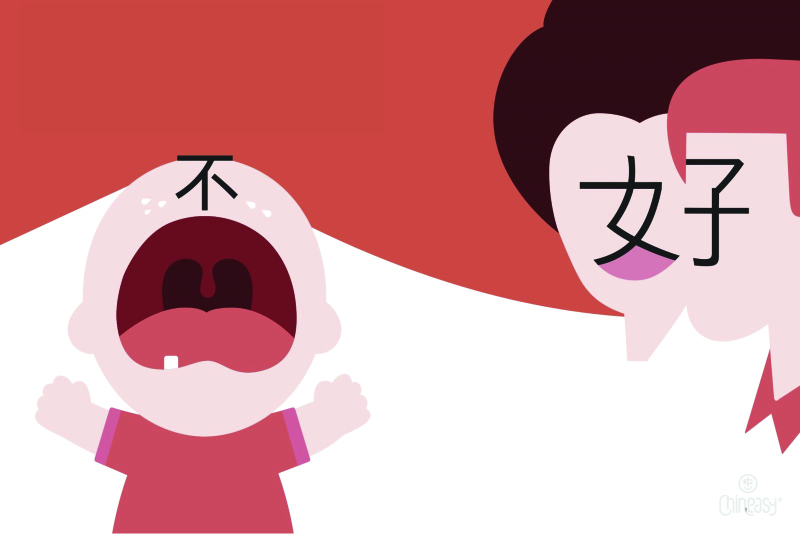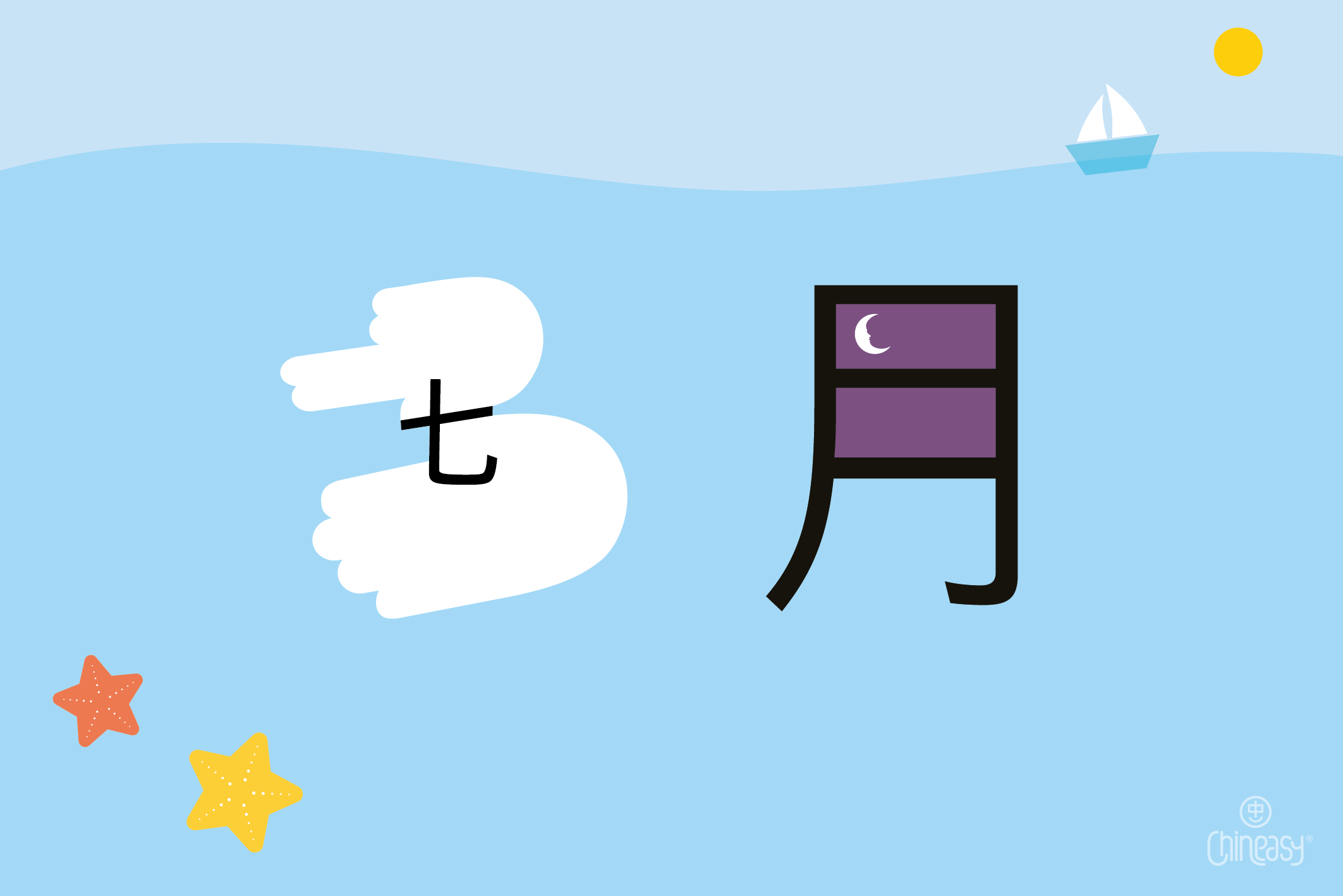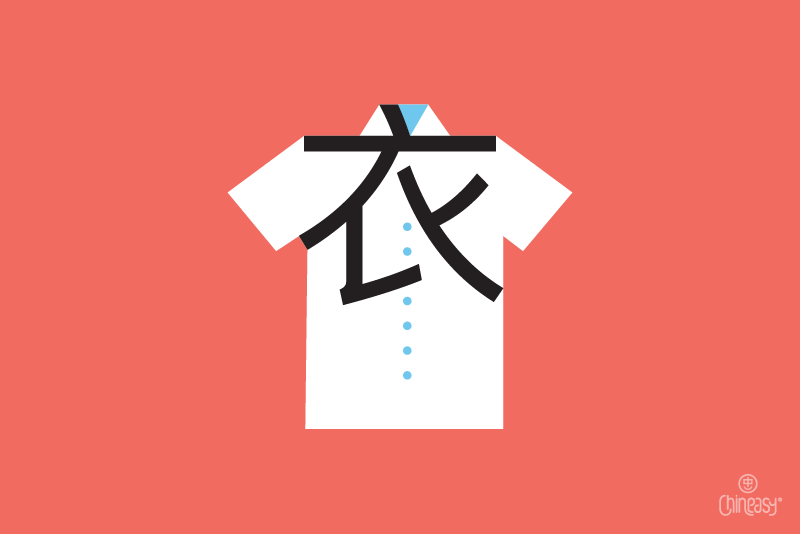Time flies, especially when you’re learning Chinese!
Just as the hour hand keeps turning, it’s time for us to learn the most essential 15 time-related vocabulary words in HSK 1.
From years to months to days and minutes, let’s jump right in!
Along the way, you’ll tackle real-life sentences straight from past papers and handy audio clips to perfect your pronunciation.
Year 年
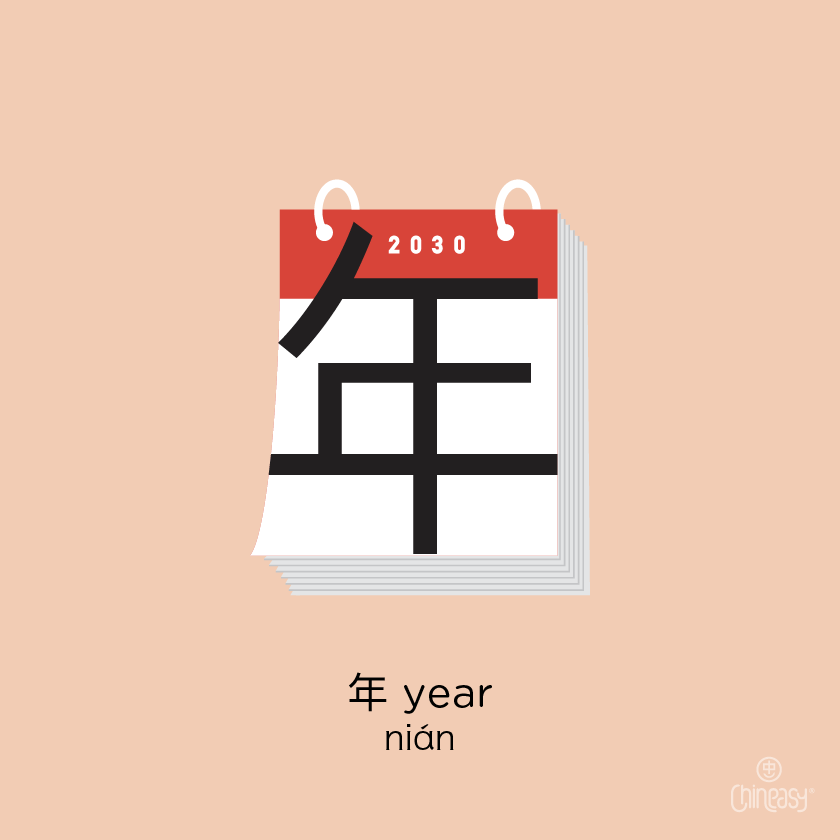
年 (nián) was a pictograph of a man carrying a bundle of grain on his back, symbolizing the harvest of a “year.”
年 means “annual” when acting as an adjective.
HSK 1 sentence:
I’m 12 years old this year.
我今年12岁。
(wǒ jīnnián shí’èr suì)
Literally: I + this + year + 12 + years-old.
Note: In Chinese grammar, time words, such as 今年 (this year), either go before the subject of a sentence or right after.
Also, prepositions of time, such as those to translate “in,” “on,” or “at,” are usually not required.
Month 月
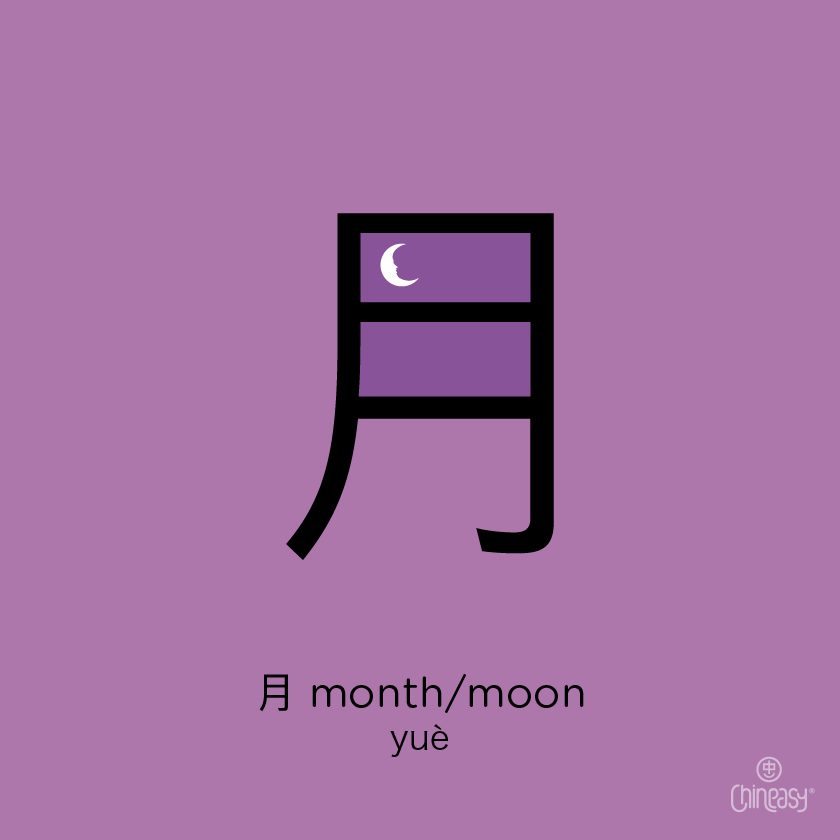
Sketch a crescent “moon” in your mind, softly illuminating the night sky. This imagery captures the origin of 月 (yuè).
Given that the moon’s phases mark the progression of days, it’s fitting that 月 also signifies “month.”
HSK 1 sentence:
Next month, I’m going to Beijing.
下个月,我去北京。
(xià ge yuè wǒ qù běijīng)
Literally: next + the measure word 个 + month + I + to go + Beijing.
Day 日
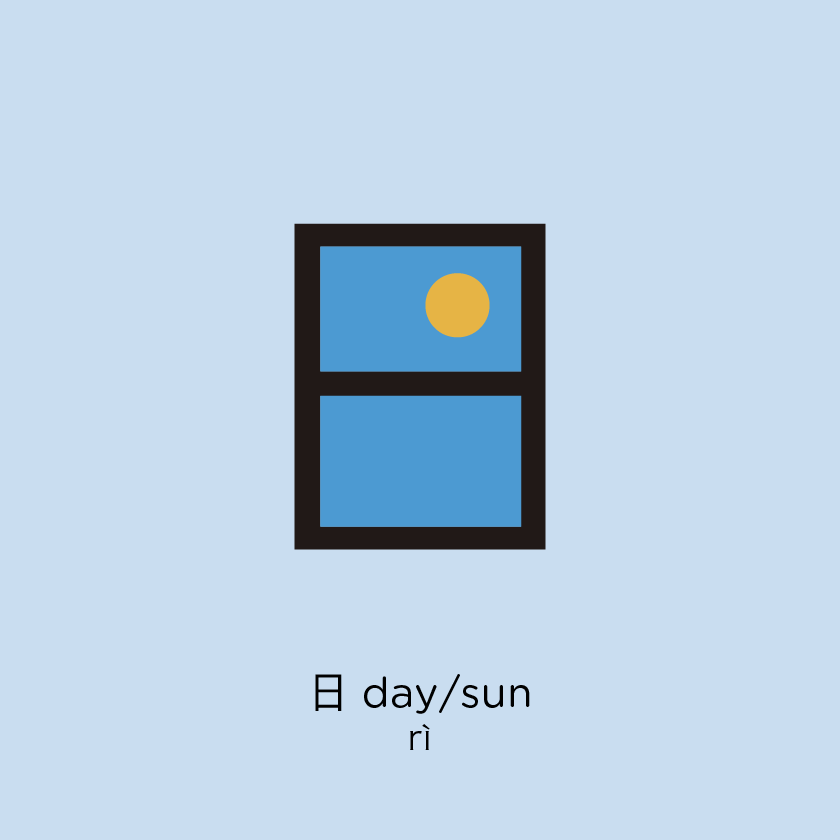
Originally, 日 (rì) was a pictograph of the sun, evolving from an oval to a more angular shape in its modern form.
Apart from “sun,” 日 signifies “day.”
HSK 1 sentence:
Today is November 11th.
今天是十一月十一日。
(jīntiān shì shíyī yuè shíyī rì)
Literally: today + is + 11 + month + 11 + day.
Note: In spoken Chinese, instead of 日, 号 (hào) is often used as “day” due to its easier pronunciation.
Week 星期
Although 星期 (xīng qī), 周 (zhōu), and 礼拜 (lǐ bài) all translate to “week,” for HSK 1, only 星期 is necessary.
By appending numbers like 星期一 (Monday; week), you can denote specific weekdays, with 一 translating to “one.”
Fancy guessing the Chinese word for Tuesday? Hint: It combines “week” with “two”!
HSK 1 sentence:
Today is Monday.
今天星期一。
(jīntiān xīngqī yī)
Literally: today + week + one.
Note: For “Sunday,” instead of saying 星期 + the number 7 (七), in Chinese, we say 星期天 (xīngqī tiān) or 星期日 (xīngqī rì).
Today 今天
With 今 (jīn) meaning “this” or “current,” combined with 天 (tiān; day), you get “today.”
HSK 1 sentence:
The weather is cold today.
今天天气很冷。
(jīntiān tiānqì hěn lěng)
Literally: today + weather + very + cold.
Yesterday 昨天
Switch out 今 (current) with 昨 (zuó; past) from 今天 (jīntiān), and voilà, you have “yesterday.”
HSK 1 sentence:
Did it rain yesterday?
昨天下雨了吗?
(zuótiān xiàyǔ le ma)
Literally: yesterday + to rain + the past marker 了 + the yes/no question marker 吗.
Tomorrow 明天
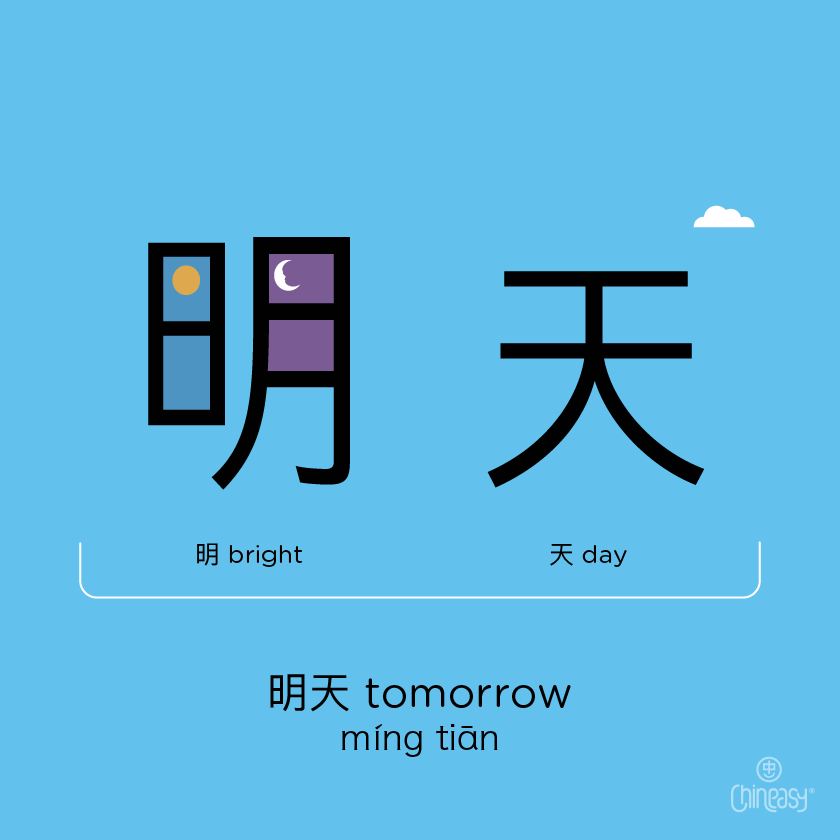
明 (míng), symbolizing “bright” or “next,” combined with 天 (tiān; day), conjures the promise of another “bright day,” i.e. “tomorrow.”
HSK 1 sentence:
We are going to watch a movie tomorrow.
我们明天去看电影。
(wǒmen míngtiān qù kàn diànyǐng)
Literally: we + tomorrow + to go + to watch + movie.
Now 现在
现 (xiàn) means “current,” and 在 (zài) indicates a state or position. Together, 现在 (xiàn zài) translates to “now.”
HSK 1 sentence:
What time is it now?
现在几点了?
(xiànzài jǐ diǎn le)
Literally: now + how many + o’clock + the past marker 了
Morning 上午
上 (shàng) signifies “up” or “previous,” and with 午 (wǔ; noon), it implies the time leading up to noon, i.e. “morning.”
HSK 1 sentence:
She likes to have a cup of tea in the morning.
她喜欢上午喝杯茶。
(tā xǐhuān shàngwǔ hē bēi chá)
Literally: she + to like + morning + to drink + cup + tea.
Noon 中午
中 (zhōng) stands for “middle.” When paired with 午 (wǔ; noon), it represents the middle of the day, which is “noon.”
Although 午 can mean “noon,” it is seldom used on its own.
HSK 1 sentence:
Can I treat you to lunch at noon?
中午我能请你吃饭吗?
(zhōngwǔ wǒ néng qǐng nǐ chīfàn ma)
Literally: noon + I + can + to invite + you + to eat + food + question marker.
Afternoon 下午
下 (xià) is the opposite of 上 and represents “down” or “next.” When combined with 午 (wǔ; noon), it captures the period after noon, i.e. “afternoon.”
HSK 1 sentence:
Where is she going in the afternoon?
她下午去哪里?
(tā xiàwǔ qù nǎlǐ)
Literally: she + afternoon + to go + where.
O’clock 点
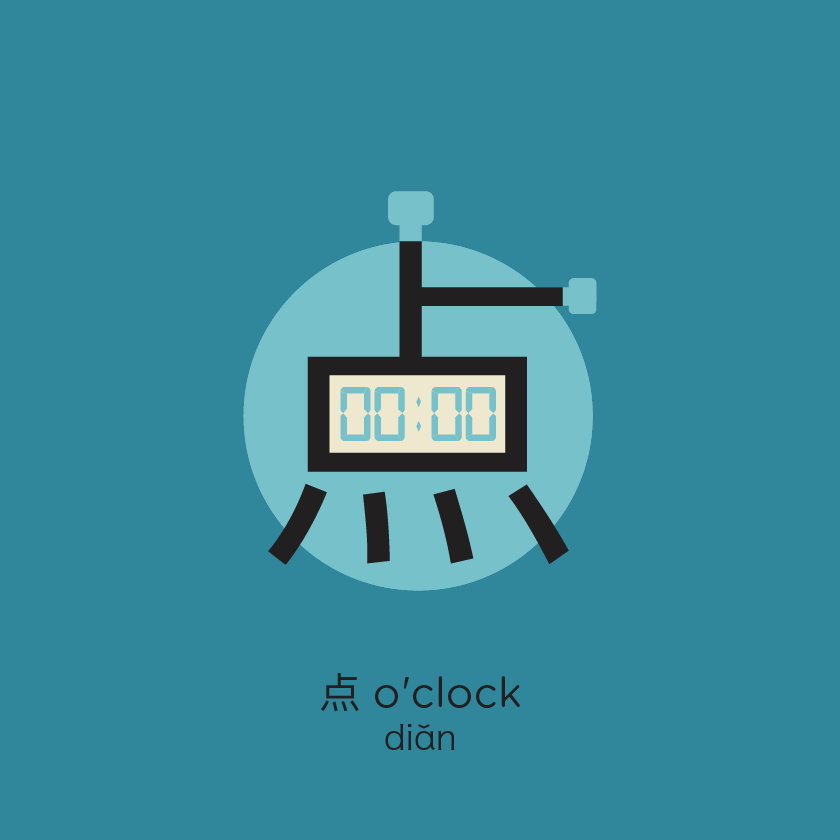
点 (diǎn) can mean “point, “aspect,” “drop,” or “spot.” However, when discussing time, 点 means “o’clock.”
HSK 1 sentence:
Which flight are you on?
你坐几点的飞机?
(nǐ zuò jǐ diǎn de fēijī)
Literally: you + to sit + how many + o’clock + the particle 的 + plane.
Minute 分

分 (fēn) has two primary meanings.
As a verb, it means “to divide.” Picture this: The character depicts the act of using a knife (刀) to divide or cut something, represented by 八 in this context.
When 分 is used as a noun, it means “fraction,” “minute” or “score.”
HSK 1 sentence:
It’s ten past two in the afternoon.
下午两点十分。
(xiàwǔ liǎng diǎn shí fēn)
Literally: afternoon + two + o’clock + ten + minute.
Minute 分钟
Another term for “minute” is 分钟 (fēn zhōng). You’re already familiar with 分 (fēn). The character 钟 (zhōng) symbolizes a “bell” or “clock.”
When stating exact times, like 2:10, the Chinese typically drop 分钟 in favor of just 分.
However, when referring to a span or duration of time, such as “15 minutes,” 分钟 is more commonly used.
HSK 1 sentence:
Approximately 15 minutes.
约15分钟。
(yuē shíwǔ fēnzhōng)
Literally: approximately + 15 + minutes.
Time 时候
The character 时 (shí) represents a measure of “time,” while 候 (hòu) suggests the idea of waiting. When combined, 时候 (shíhòu) denotes a particular “time” or “moment.”
For HSK 1 learners, it’s worth noting that the phrase 什么 (shénme) often precedes 时候. When used together, 什么时候 (shénme shíhòu) translates to “when.”
HSK 1 sentence:
When is he at home?
他什么时候在家?
(tā shénme shíhòu zài jiā)
Literally: he + what + time + at + home.
As we wind down the clock on this post, you’ve now been equipped with the 15 most crucial HSK 1 time-words!
From tracing the roots of ancient pictographs to diving deep into each character’s tale, we’ve also embedded handy memory aids to accelerate your learning journey.
Commit to revisiting and practicing these terms, integrating them into daily dialogues, and challenging yourself with the example sentences we’ve explored.
By mastering these foundational terms, you’ll be perfectly timed and primed for acing your HSK 1 exam.
Wishing you success on every tick of your learning journey!
